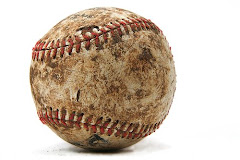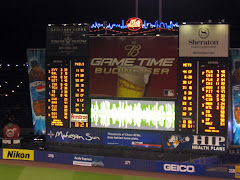 Ted Williams Territory: one of the best in OPS and OBP
Ted Williams Territory: one of the best in OPS and OBPThere is a growing debate in fantasy baseball over a new statistical category.
Many of the more intense fantasy leagues have already added a category of on base percentage as a measure to gauge a performer’s real life utility to a team. So a Todd Helton who may not hit homers anymore still becomes golden because he walks often and strikes out rarely. A number of leagues though are now waiving OBP in favor of OPS.
On Base Percentage (OBP) is a very important indication of a player or team's value. The statistic takes batting average, which is the percentage of at bats in which a batter gets a hit, and expands upon it, adding in the batter's ability to draw a walk or otherwise get on base, as well. On base percentage is basically the percentage of all times a batter goes to the plate that he gets on base.
To on base percentage, take the total number of hits a player has, and add the total number of walks and hit by pitch to that number. Next, add that total by the total number of at bats, walks, hit-by-pitch, and sacrifice flies.
To understand what this means, you can always think about OBP as a percentage or a ratio. In other words, a hitter with a .406 on base percentage reached base in 40.6% of his trips to the plate. We are talking Ted Williams Territory.
I was in the stands at the World Baseball Classic and one of the stats on the board was not OBP, but OPS. Nine of ten fans I talked to had any clue what it was. I was explaining it to everyone. But no one cared; it was too complicated. They wanted to just watch the game.
OPS is the evolution of OBP. On base percentage plus slugging percentage equals what is now known as OPS.
Slugging percentage measures the number of types of hits that a batter gets- like singles, doubles and triples, divided by the times at bat. TB stands for total bases and the total formula for calculating OPS goes like this:
AB (H + BB + HBP) + TB (AB + BB + SF + HBP)/ AB(AB +BB + SF + HBP) = OPS
Generally the OPS of a good player is considered to be around .900 to .950. An OPS of 1.000 is generally the high standard for an exceptional player. An OPS of 1.000 or higher is scored by the baseball greats. For example, Babe Ruth has the highest career OPS at 1.1636. He is followed by Ted Williams and Lou Gehrig. Barry Bonds stands fourth in the rankings for career OPS with a 1.0533 measurement. He has the two top-rated seasons for OPS.
Wonder how he would do today. Reminds me of a great Ty Cobb line when he was asked-30 years after he retired- how he would hit in the new modern ball era.
He replied: "only about .320"
The reporter asked, "Why so low?"
Cobb, the Georgia Peach, responded: "You have to realize, I am 73 years old."
Some critics feel that the OPS is not a great formula for measuring performance. They feel that the on base percentage is nearer to the mark than the combination of on base percentage and slugging percentage. On base percentage tends to more accurately indicate the likelihood that a player will actually make it to the home plate and score a run. If you are in a keeper league thinking of making a switch from OBP to OPS, it won’t dramatically impact your squad.
One of my favorite and more enthusiastic leagues is the 20 team Grand Slam Uber Society, where owners are a zealously competitive lot. They use a variation of OBP and OPS which is called BBKO, or a player’s ratio of walks to strikeouts. You get an Ivan Rodriguez or Russell Branyan and they will decimate your team’s stats by striking out and never walking. You think that new kid on Texas, Chris Davis is helping you with homers, or Corey Hart is helping you with steals, but damn, then you apply this category and you see you these guys are like playing with a pitcher who wins 15 games with a 5.8 ERA.
The key is balance. Finding it opens the doors to victory


























No comments:
Post a Comment